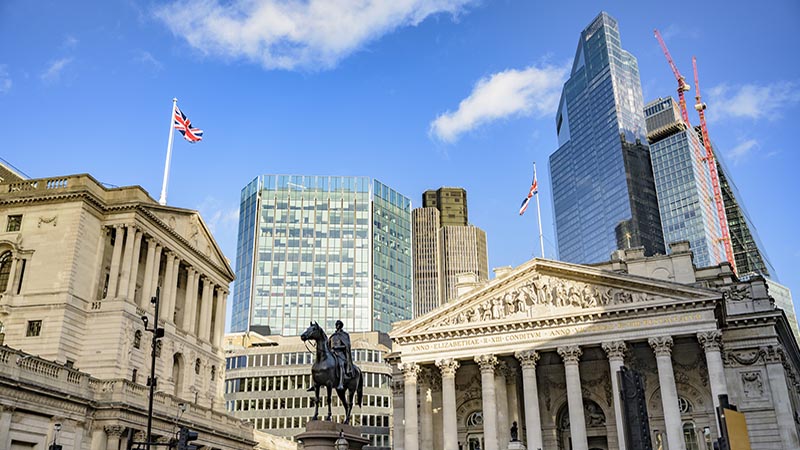The Bank of England’s Monetary Policy Committee should clearly set out its medium-term expectations for the direction of travel of interest rates, according to some industry commentators, speaking ahead of its meeting tomorrow (1 February).
The MPC is widely expected to hold rates at 5.25%, according to forecasts, with many predicting falls from May this year. Rates have stayed at their current level since August last year.
This is despite an unexpected uptick in December’s inflation figures, reaching 4% year-on-year, with core inflation remaining at 5.1%. The BoE still holds a goal for inflation at 2%, with analysts now forecasting five interest rate cuts throughout the year.
Karen Ward, chief market strategist for EMEA at JP Morgan Asset Management, said: “In my view, the Bank of England (BoE) needs to set out a framework to guide expectations for rates in the coming months. It is entirely possible that transitory factors push inflation below the 2% target over summer, which might naturally lead the market, and broader public, to expect rate cuts.
See also: ECB keeps rates stagnant and reiterates path to lower inflation
“However, if the labour market is still generating medium-term inflationary pressures, then cutting interest rates would be the wrong thing to do. Why? Sticky wage growth would be a sign that the labour market and broader economy is already at full capacity. Falling inflation in itself could lead to a real wage boost and a reacceleration in spending, above what the economy can cope with. Indeed there is already some evidence of this reacceleration in the business surveys. Adding rate cuts might further fuel the underlying capacity problem.”
Peter Goves, head of developed market debt sovereign research of MFS Investment Management, also reflected that levels of wage growth and a ‘loosening’ labour market could create more conservative movement from the MPC.
“We do not expect the 6-3 vote split of December to be repeated. It’s conceivable [Dr Swati] Dhingra votes for a cut. It’s also possible the MPC removes its hawkish tightening bias from its guidance (which the market would likely embrace as a dovish pivot),” Goves said.
“Maintaining the fundamental anchor for our investment thesis we see UK growth below potential, restrictive rates increasingly biting on real activity and inflation falling. The BoE are at terminal and we remain of the view that cuts are coming in 2024 – and highly likely after the ECB and Fed.”
Tomasz Wieladek, chief European economist at T Rowe Price, added: “In December, UK inflation turned out to be stickier than expected, while survey data suggested a rebound in output and employment in the services sector. Mortgage approvals have begun to rise and mortgage rates are now falling, which will allow the mortgage and housing market to recover further over the next six-to-12 months.”
Wieladek also believes the 2% National Insurance cut will lead to economic demand, which would increase with more cuts. He also warns that inflation could tick up following supply chain disruptions in the UK, with reactions near the middle of the year.
“Overall, I believe the Bank of England will use its inflation projection to send a hawkish signal to markets and the public. I expect the inflation projection conditioned on the current market path for interest rates will show inflation is still above target 2-3 years ahead,” Wieladek said.
“This will be the Bank of England’s way of telling financial markets that too many rate cuts are still priced in.”







